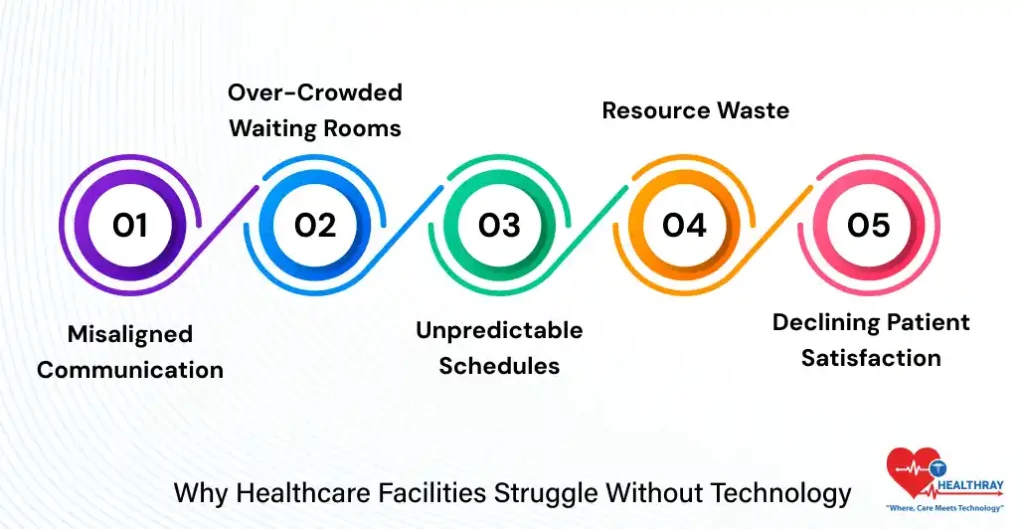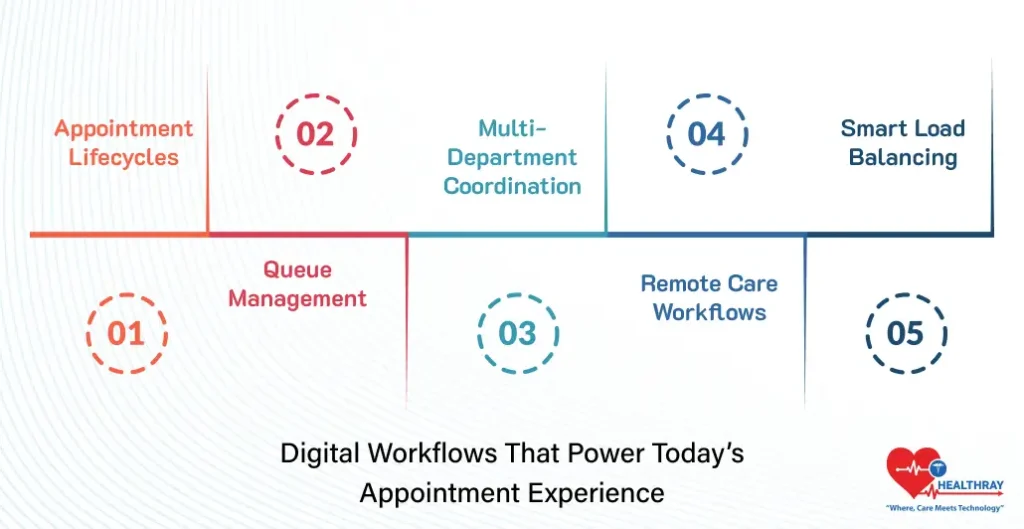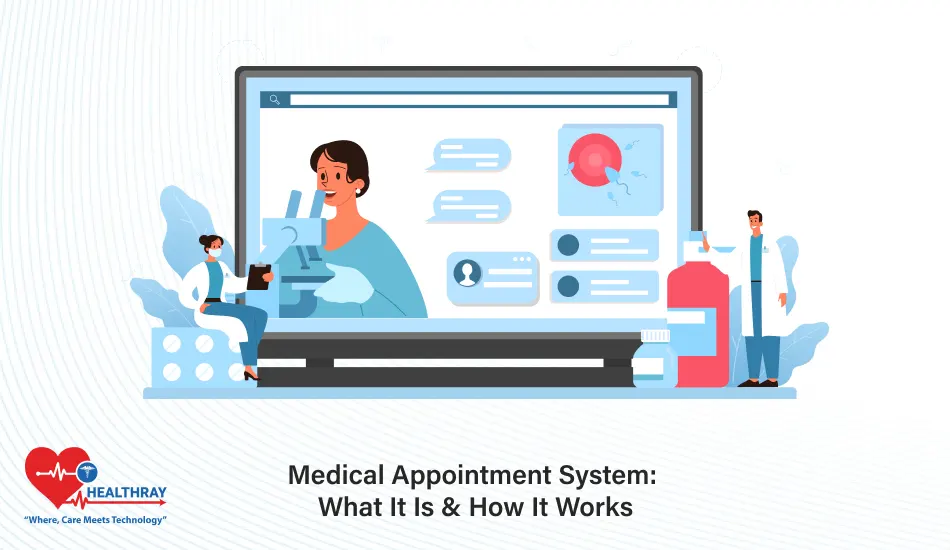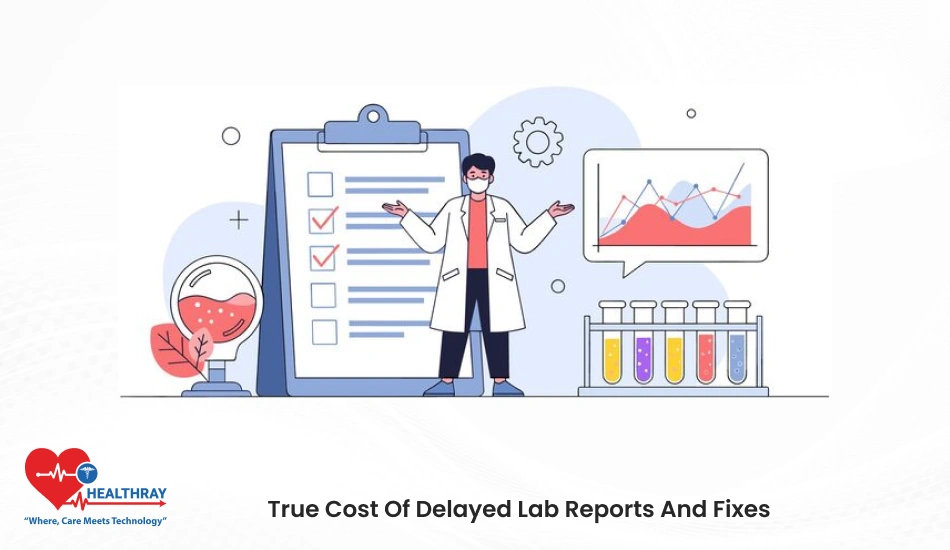Summary
The healthcare sector continues to evolve at a rate that seems nearly untraceable, especially in rapidly expanding markets such as INDIA and the USA where patients demand speedy service and physicians need to be able to predict and maintain a steady schedule. As a result, the Medical Appointment System is a digital overlay in the center of this change, which substitutes the old booking patterns with organized and instantaneous management. In addition, it assists hospitals, clinics, and individual physicians to provide care in a disorganized way. Patients become more lucid at the very beginning, and medical teams work with much more confidence. Overall, this guide will bring you to the center of modern scheduling, the technology that allows this and the path it takes through each of the stages of the healthcare process.
Introduction
The history of every healthcare is one that started way before a doctor encounters a patient. It starts when one realizes that he/she requires assistance. At that moment, the necessity of assurance, haste, and fluent communication arises. Indian citizens are used to calling clinics multiple times to ensure that there is a place, whereas American patients go directly to the online service to reserve a slot. Despite different approaches, the groups desire the same thing, certainty. Doctors want the same too. They require a consistent pace so that they can schedule their day and provide quality care without being in a hurry.
A Medical Appointment Software creates this equilibrium. Moreover, a Doctors Appointment System does more than simplify booking. Medical staff modify their work habits when they rely on structured scheduling. Patients also respond more confidently because the process feels predictable. Clinics and hospitals ultimately expand the volume of work they can complete in a single day. In essence, though the operations of each facility might be different, the need is the same everywhere; structure. Accurate scheduling stabilizes the entire healthcare environment.
The Changing Reality of Patient Appointment System

Today, patients are acting in a different way as compared to five years ago. Individuals do not wait until the clinic informs them that they should visit. Patients expect autonomy in how they book care. Digital clarity also matters because it reflects the convenience they experience in other industries. For instance, many now compare healthcare to their daily digital interactions in banking, travel, and retail. This transition is particularly very strong in INDIA, where mobile usage overshadows all other activities, and in the USA, where digital healthcare use has already become the norm.
Due to such a change, the traditional scheduling cannot be trusted indefinitely in the clinics and hospitals. Calls create friction. Paper logs create errors. Lack of trust is caused by miscommunication. Consequently, the Doctor Appointment System alleviates these areas of concern since it is suited to a world that appreciates immediacy. Patients value a booking experience that is similar to their lifestyle; it must be fast, predictable, and completely transparent. Physicians like it as it eliminates unexpected events, queues, and inconveniences.
The new behavioral pattern is why the modern scheduling platforms remain growing in both markets. People change first. Healthcare changes next. Ultimately, the whole evolution is held together by technology.
Understanding a Medical Appointment System From the Ground Up
Whenever one hears the term Medical Appointment System, the first thought that comes to mind is that it is a booking tool. In actual sense, it is a more profound structure. It is the core of flow of patients and all the steps are guided by the same logic. In other words, imagine it to be a virtual traffic controller within the healthcare experience. It makes sure that every appointment occupies the appropriate slot, links to the appropriate doctor, and fits into the appropriate clinical process.
This system, in contemporary practice, serves as an intermediary between healthcare provision and patient will. It achieves this by using a combination of real-time scheduling logic, patient engagement, automation and workflow tracking. It is also aligned with the grand movement of healthcare digital transformation that is transforming how physicians engage with technology.
In brief, this system works around the following ideas:
- Care should begin before the patient enters the building
- Every appointment should follow a predictable path
- Doctors should stay informed about their day
- Staff should work without interruption or unnecessary pressure
- Patients should move through the system without confusion
How a Medical Appointment System Works at Its Core
A medical appointment software functions by linking three layers into a single streamlined chain: the booking layer, the scheduling engine and the backend workflow engine. Accordingly, they all move in real time such that all the actions update the whole system immediately.
The Booking Layer
This layer deals with patients directly. It seems as a clean interface in which they select doctors, times and types of consultations. It takes physical visits, virtual visits, follow-ups, and diagnostic appointments. Therefore, the booking layer will provide transparency at the initial level since anything on the initial level will have an impact on the rest.
The Scheduling Engine
This is where the system lies. It verifies the availability, allocates slots, and regulates the rhythm of the day of the doctor.
The engine controls:
- Patient self-scheduling
- Automated appointment reminders
- Load balancing
- Real-time rescheduling
- Queue updates
All the changes are reflected on the doctors appointment system for modern healthcare in real-time, and no information is left ambiguous.
The Workflow & Data Layer
This section has interlinked the medical scheduling software to the clinic, hospital teams, and even with the outside tools. It contains history of the patients, past visits, reports and notes. It is also aligned with a medical appointment booking system and a hospital appointment system to ensure that the departments are aware of patient movement.
In effect, the system is a three layered highway system. There is no interruption in the flow of cars due to the fact that all signals, lanes, and directions remain in parallel.
Why Healthcare Facilities Struggle Without Technology

Healthcare moves fast. Manual processes do not. The strain is evident in a number of aspects when hospitals or clinics are relying on old-fashioned systems.
Misaligned Communication
Reception has problems with telephone calls. Physicians do not necessarily get updated in time. There is poor communication to patients. As a result, this results in frustration in all places.
Over-crowded Waiting Rooms
In the absence of a patient appointment system, patients come too early or too late. Thus, this causes unnecessary crowding and more waiting time to all people.
Unpredictable Schedules
When the appointments change every second, the doctors are unable to plan their day. Employees remain in a state of stress since they attempt to manage flow without a stable system.
Resource Waste
Poor distribution of the staff, rooms, and diagnostic units occurs in cases of unstructured appointments. This raises the cost of operation and lowers productivity.
Declining Patient Satisfaction
Patients give a verdict on a healthcare provider immediately they make a reservation. If that initial step confuses them, then they have lost faith before they visit a doctor.
Such problems concern not only India but also the USA, but the extent is different. Nevertheless, the solution is the same, a system of interconnected healthcare appointments making the flow easier.
The Architecture Behind an Effective Medical Appointment System
A doctor appointment system is a sort of a digital ecosystem. It is not built as one tool. It is constructed as a web of interrelated elements which uphold one another.
Front-End Experience
This section deals with patients. It handles:
- Search
- Availability
- Slot selection
- Consultation mode
- Basic profile creation
- It introduces the initial dimension of clarity.
Scheduling Logic
This engine handles real time updates. It displays the availability of the doctor, patient preferences, and clinic regulations. It maintains the balance in the schedule during the day.
Workflow Automation
This module handles follow-ups, reminders, instructions, and in house messages. It eliminates the need to make manual calls and receives the automated appointment reminders and maintains the communication on the same level.
Integration Layer
It connects to:
- Billing
- EMR
- Diagnostic units
- Pharmacy
- Telehealth check
- Mobile apps
The medical appointment management system is complete because of the integration layer.
Data & Reporting Layer
Analytics, insights, peak hours, patient patterns, and scheduling history are managed by this layer. Therefore, it makes the hospital ready to make future decisions and sharpen planning.
Step-by-Step: How a Medical Appointment System Actually Works
A medical appointment scheduling software is a guided system that begins with discovery and concludes with follow-up. In fact, the entire experience is natural in that every step has an attachment to the next.
Discovery
Patients look for a physician on the Internet. They verify location, specialty and availability.
Selection
They select a time slot that would suit them. Accordingly, the earliest availability is displayed in the system to minimize waiting.
Reservation
They make the reservation using the medical appointment software. The slot is blocked by the system immediately.
Confirmation
The patients are sent a message containing time, location, and instructions. Employees are informed about the change on their screens.
Reminders
The system sends automatic reminders of appointments. This lowers no-shows and keeps the patients updated.
Visit
Patients come at the opportune time. The staff checks them in. The physician views the entire profile and gets ready.
Follow-Up
The system makes automatic appointments. It maintains contact with the patients even after the consultation.
Digital Workflows That Power Today’s Appointment Experience

Each of the contemporary healthcare appointment systems has digital workflows behind the scenes. They do not make a noise, and yet they make it all.
Appointment Lifecycles
Every appointment passes through the process of booking, confirmation, review, and follow-up without having to manually track it.
Queue Management
The system regulates the flow to ensure that patients are not packed in the waiting area. Employees are aware of the next and the duration of delay.
Step towards digital era with our healthcare solution
Revamp your hospital facilities and embrace change for better healthcare management. Ease in managing and organizing large medical datasets leads to effective analysis. Seize the opportunity now!
Multi-Department Coordination
Future appointments are made in diagnostics, pharmacy and labs and scheduled.
Remote Care Workflows
Virtual consultations are remote consultations that unite patients anywhere. Physicians treat these visits within the same system.
Smart Load Balancing
The system distributes the appointments to prevent the pressure during the peak hours. This keeps the doctors fresh and lessens the waiting time of patients.Medical appointment system
These processes make the whole facility peaceful. Clinics stay organized. There are predictable trends in hospitals. Physicians alternate between consultation easily. Patients do not get lost in one of the stages. Since everything operates in the background, teams remain liberated to work with people rather than paperwork.
How Hospitals Manage Heavy Patient Volume with Medical Appointment Systems
The Indian hospitals are overcrowded. The USA has lengthy administrative processes in its hospitals. The two challenges put strain on the appointment management.
A medical appointment scheduling software is useful in a number of ways to hospitals:
- A doctor appointment system distributes patient load evenly across departments.
- Diagnostic teams remain informed about upcoming cases because the system updates them automatically.
- Front-desk pressure drops as patient self-scheduling takes over repetitive tasks.
- Rotating doctors stay coordinated through unified scheduling.
- Real-time information equips staff to react quickly and keep the flow steady.
This system is important in modern hospitals since it does not only schedule. Instead, it coordinates, predicts and adapts.
How Doctors Use Technology to Plan Smarter Days
Physicians can perform optimally when their day remains predictable. Digital scheduling lowers the cognitive burden encountered as a result of uncertainty. It provides physicians with a vivid picture of their day by having an organized flow. Doctors enter each consultation with the right background information at hand. They plan procedures on time because the schedule remains clear. As a result, every session moves forward without unnecessary pressure.
A doctor appointment system makes it all according to the rhythm of the doctor. The system supports dynamic workflows and adapts naturally to changes. Unforeseen delays no longer disrupt the day because the doctor appointment scheduling software adjusts in real time. Automatic scheduling updates keep everyone informed. The system has a complete history, and therefore doctors do not lose context. They are confident in shifting between cases.
This transparency enhances decision making. It improves team-to-team communication. It liberates physicians of administrative clamor to focus their efforts on actual clinical practice.
How Doctors Appointment System Improve Hospital Performance
Hospitals function as ecosystems. Each department has an influence on the other. When there is a smooth flow of appointments, then all is stable.
- Staff performance increases
- Operational cost reduces
- Resource allocation becomes sharper
- Patient satisfaction increases
- Coordination becomes cleaner
These outcomes are interconnected through a hospital appointment system. It does not only handle schedules. It builds strength within the organization. Since all appointments remain organized, the reputation of the hospital increases. Individuals discuss pleasant experiences. They refer friends and family to the facility. Efficiency is transformed into a competitive edge, and in the center of this rests a stable medical appointment management system.
Why Healthray Brings a Sharper Approach to Medical Scheduling

Healthray provides a scheduling ecosystem that meets the demands of the contemporary healthcare environment. It combines the power of a medical scheduling software with the wisdom of highly automated systems. The platform carries clinics, hospitals and multi-specialty networks. The system adapts effortlessly to the workflow demands of both INDIA and the USA.
It aligns patient information, intelligent scheduling, and multi-location operations within one unified platform. Teams manage physical and virtual interactions smoothly because real-time updates guide every step.
Healthray is an ecosystem and not a simple tool. Coordination strengthens across departments, and patient engagement rises naturally. Instead of creating complexity, the system enhances departmental efficiency.
This high level of integration makes Healthray a safe bet among the healthcare organizations that seek a stable and future-proof scheduling environment.
The Future of Appointment Management in Healthcare
Healthcare scheduling is entering a new era. Systems continue to move toward automation, prediction, and digital intelligence. The future healthcare appointment system will use:
- Predictive load forecasting
- AI-guided patient routing
- Universal scheduling identity
- Auto-adjusting calendars
- Integrated home-care pathways
This future may feel advanced, but the first steps already exist inside modern scheduling platforms. The journey began the moment healthcare unlocked structure through technology.
Conclusion
Healthcare keeps evolving, and scheduling remains the entry gate for every patient. A strong Medical Appointment System brings clarity to this journey. Daily tasks in clinics become easier, and hospitals gain stability in high-volume environments. Trust, communication, and overall operational efficiency grow as a result. Above all, it gives patients a predictable and respectful experience.
If you want to experience a modern, intelligent, and reliable appointment solution for your clinic or hospital, book your FREE Healthray demo today. See how a clear and structured flow transforms every moment of the patient journey.





